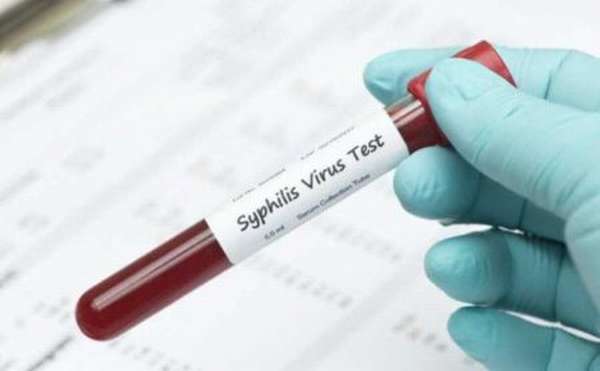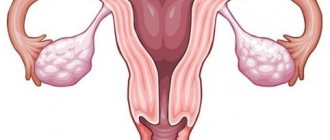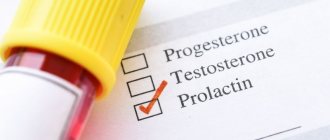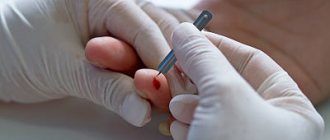Express diagnosis of syphilis, abbreviated EDS, refers to serological non-treponemal methods of blood testing. This test was proposed by the German immunologist A. Wasserman and was named after him - the Wasserman reaction (RW). Its main advantages are simplicity, low cost, and quick results. Blood for EDS (or RW) is donated during mass examinations (screenings) to identify diseases in seemingly healthy people without any symptoms. Today this test is considered obsolete. It has been replaced by others, although until now, when talking about non-treponemal diagnosis of syphilis, they use the expression “donate blood for RW”.
What is the non-treponemal method?
As you know, syphilis is caused by Treponema pallidum, which is a spirochete (spiral-shaped bacteria). After its introduction, the body begins to produce antibodies (IgG and IgM immunoglobulins) to lipoproteins and phospholipids, which are released as a result of cell damage by the spirochete, and to the membrane lipids of the pathogen itself. Antibodies to lipids appear in the blood about a month after infection. Using this test for primary syphilis, they are detected in the blood in 90% of cases 6 weeks after infection. With secondary syphilis, a positive result is recorded in almost 100% of cases.
The causative agent of syphilis is the spiral-shaped bacterium Treponema pallidum.
If the emf is positive
If the EDS in the patient’s blood is positive, then this may indicate either syphilis or a false positive result. If the result of this reaction is positive, then the patient, as mentioned above, is referred for a consultation with a dermatovenerologist to confirm the diagnosis with specific treponemal tests, or to refute it.
A false-positive reaction with cardiolipin antigen can occur in various autoimmune diseases, for example, in autoimmune thyroiditis and systemic scleroderma. In middle-aged people, the result may be positive for intravenous drug addiction, for diseases caused by microorganisms similar in their antigenic structure to the causative agent of syphilis. Such diseases include leprosy, tick-borne borreliosis, and other infections. A false positive reaction cannot be excluded in case of HIV infection, in the presence of atypical pneumonia, and even in elderly healthy people.
Therefore, if the express diagnosis of syphilis suddenly, in the midst of complete health, turns out to be positive, then you should not worry. You just need to be examined in more depth, and a general practitioner, or an infectious disease specialist, or a venereologist will always treat this result with understanding, since in their practice this happens quite often even in people who have nothing to do with this unpleasant disease
Disadvantages of the method
The main disadvantage of EDS is its low specificity and the possibility of false-positive results. The fact is that antilipid antibodies can be produced not only during syphilis, but also for other reasons. Among them:
- chronic and acute diseases: tuberculosis, hepatitis, systemic lupus erythematosus, tumors, inflammatory heart diseases, blood diseases, diabetes mellitus, scleroderma, dermatoses and others;
- physiological conditions: menstruation, pregnancy;
- anesthesia, taking certain medications;
- drug addiction, alcoholism;
- consuming fatty foods and alcohol the day before donating blood.
Another disadvantage is the false negative results that can occur early in the disease. That is, the patient is infected, but the analysis showed a negative reaction.
In addition, such testing is useless at the late stage of syphilis due to lack of sensitivity.
Class affiliation of cells lgM or lgG
The class affiliation of the lgM or lgG cells is indicated: when treponema enters the body, the immune system begins to react violently to the penetration of foreign cells. First, antibodies such as lgM are formed. They can be detected within a week after a person becomes infected. IgG appears in the body after about a month and can remain in it for a long period, even if the disease has been successfully treated. The presence of this class may indicate that the body has developed a stable immune response to Treponema pallidum.
If the result is negative and the titres indicated with the word IgG next to them, one can judge the secondary nature of syphilis. That is, there are antibodies to Treponema pallidum in the blood, but these are memory antibodies that can circulate in the body for a long time after the patient has recovered. Such an analysis in some cases may be positive, although in fact it is a false positive. An accurate determination requires taking into account all previous research results and monitoring the decrease in titer. All subsequent tests may continue to give positive results.

The interpretation of the blood test for EDS should be carried out by a highly qualified specialist.
How is the analysis carried out?
Venous blood is usually used for research. It is taken in the morning on an empty stomach, that is, the last meal should occur no later than 8 hours before the procedure. It is not recommended to drink alcohol or eat fatty foods the day before.
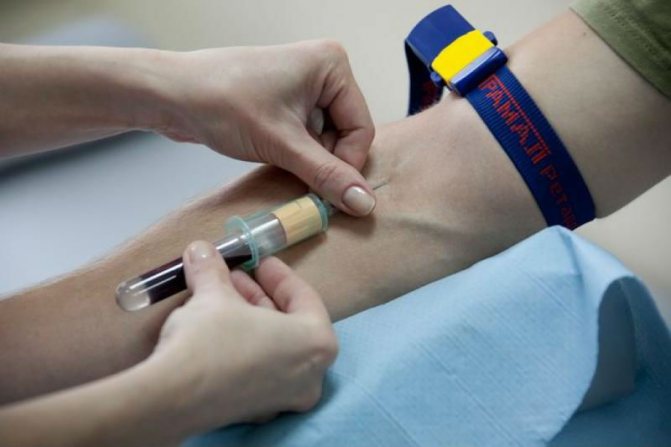
Venous blood is taken to test for syphilis.
Two to three drops of the patient's blood serum are mixed with the cardiolipin antigen in a well of a glass plate and the reaction is observed, which lasts for 30 minutes. The conclusion is made based on the amount of sediment and the size of the flakes formed. The intensity of the reaction is assessed on a scale from one to four (+, ++, +++, ++++).
If the reaction is positive, confirmation of the result using treponemal tests is required.
Decoding the test for syphilis and normal indicators
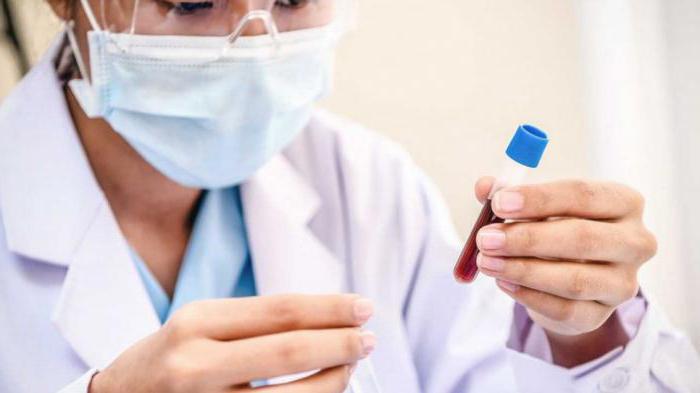
During the EDS procedure, it is difficult to talk about a certain norm or its violations. The result in this case is either negative or positive. But in addition to this, there are also titers, which show how much antibodies are present in the blood. Each specific result must be deciphered by a specialist. There are a large number of different subtleties, and therefore there is no need to draw premature conclusions and try to decipher the analysis yourself or find the answer to the question of what it is - a blood test for EDS - using the Internet.
Analysis transcript
The EMF result can be either negative or positive. The more advantages, the more serious the defeat:
- + and ++ – weakly positive reaction (with one plus, the result is considered doubtful);
- +++ – positive;
- ++++ – strongly positive.
As a result of the study, antibody titers are indicated. If the analysis is carried out to monitor treatment, then the titers determine whether recovery has occurred. As a rule, after treatment the patient is monitored for a year. During this time, it is tested several times. The effectiveness of treatment is indicated if titers have decreased fourfold or more over the course of a year. If there are no IgM immunoglobulins in the blood, then there is no resumption of infection. IgG immunoglobulins may be present in the blood for a long time after treatment, sometimes even throughout life.
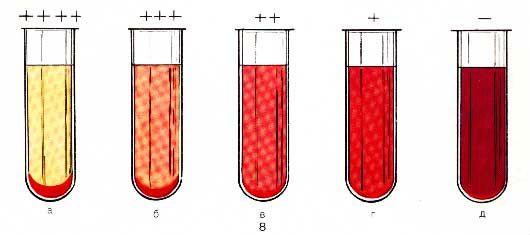
The test result may be negative or positive
Indications and rules for blood sampling
Blood for this study is taken from a peripheral vein, and no restrictions or special measures need to be taken before donation. Only people who smoke need to make an effort and not smoke for at least half an hour before taking the test.
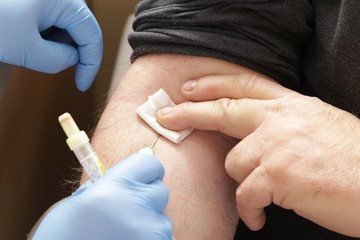
This test is used as a screening test for the initial diagnosis of syphilitic infection, or to assess the effectiveness of treatment. Decreed groups of the population are subject to screening research. These include:
- donors, including organs before their removal (for example, kidneys, red bone marrow or parts of the liver from relatives);
- pregnant women;
- working in the food industry or selling food products;
- employees of children's educational and medical institutions;
- all patients admitted for planned treatment to medical institutions.
Also, rapid diagnosis of syphilis is first carried out when there is a primary suspicion of this infection. Most often, this is an unfavorable sexual history, various complaints associated with enlarged inguinal lymph nodes, the appearance of various ulcers on the genitals, the presence of other sexually transmitted diseases, and also if it turns out that the sexual partner has syphilis. Indications also include blood tests of a newborn child if the mother was previously diagnosed with syphilis.
Indications for EDS
Direct indications for testing blood for syphilis are symptomatic manifestations of the disease:
- Primary syphilis. In the area of penetration of the bacterium (the mucous membrane of the genital organs, anorectal area or oral cavity), a hard chancre appears - a painless erosive compaction, regional lymph nodes enlarge, the temperature periodically rises to subfebrile (37-38℃) values, and neurological symptoms (myalgia, arthralgia) are disturbing.
- Secondary syphilis. It is characterized by syphilitic skin rashes (syphilides) in any area of the body, stable low-grade fever, redness of the tonsils, hair loss, and hoarseness.
Important! It is necessary to donate blood for possible syphilis infection after unprotected intimate contact with a questionable sexual partner.
Routine testing for infection is carried out by:
- catering workers, food industry workers, doctors;
- pregnant women when registering at the antenatal clinic and as part of three perinatal screenings.
- organ donors for transplantation, IVF and blood donors;
- patients who have undergone treatment for syphilis;
- potential hospital patients (in preparation for hospitalization).
A blood test for the Wasserman reaction is carried out in a comprehensive diagnosis of other sexually transmitted infections. It is mandatory to check blood for RW in newborns from mothers diagnosed with syphilis.
Preparation
The results and interpretation of a blood test for EDS may be dependent on secondary facts. Since the diagnosis can be affected by food intake, you should prepare for the test in advance.
Where is blood taken for EDS analysis? Most often, blood is drawn from a vein in the elbow. In some cases, blood for syphilis can be taken from a finger, since very little is required for analysis.
It is important that blood is donated on an empty stomach (at least 8 hours after eating), and the day before you should not drink alcohol or fatty foods.
A certain amount of blood is mixed with cardiolipin and the sediment determines the presence of the disease. The disease is rated on a scale from 1 to 4.
The need for analysis for certain individuals and the essence of the study
Such analysis is necessary for some categories of the population at risk.
This:
- people who show obvious signs of the disease;
- people who have some contact with an infected person;
- the presence of partners infected with this disease;
- small children born from patients with syphilis;
- categories of people with other sexually transmitted diseases.
The examination is carried out by collecting venous blood. The delivery of biological material must take place during the daytime. 8 hours before the procedure, it is necessary to exclude fatty and spicy foods, as well as alcoholic beverages from the diet.
During the test, a few drops of blood are mixed with cardiolipin and placed under glass. Observation of the reaction lasts about 30 minutes. During this period, flakes or sediment should form. A conclusion is drawn based on their number.
The result is characterized on a 4-point scale, and the answers are indicated by a “+” sign. Depending on the number of pluses, the research answer will be determined.
What is a blood test for EDS?
EDS is an express method for diagnosing syphilis. Also called RW, which is short for “Wassermann reaction”. The analysis is named after the scientist who first proposed this type of research. EDS blood test has long been known as an inexpensive, quick way to diagnose syphilis. This study is included in the list of necessary medical examinations. Its simplicity and information content makes it possible to identify a dangerous disease in the initial stages. If the disease is not detected in time and not treated, it progresses, affecting organs, developing into a chronic form. With early diagnosis, the disease can be successfully treated.
